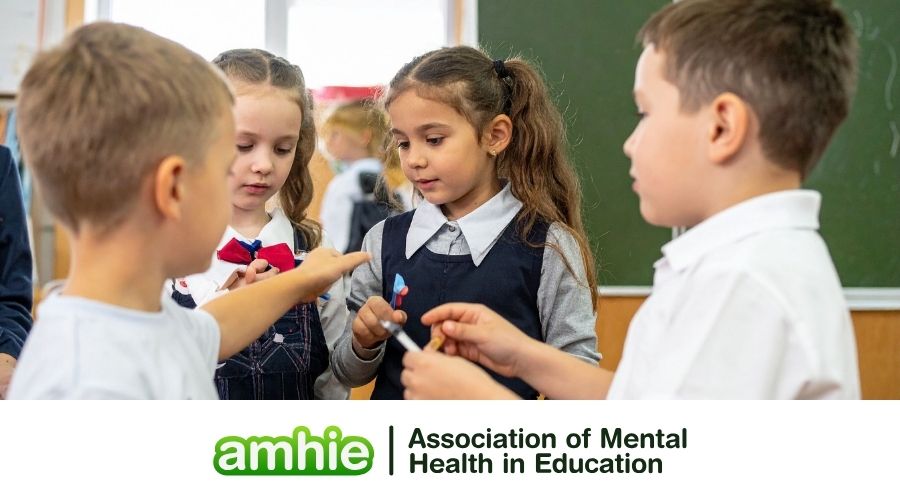
The Children’s Commissioner’s School Census is out and mental health is a key concern
Key Concerns and Statistics:
- In 2022, almost one million children in England had an active referral to mental health services.
- Children and young people’s mental health services (CAMHS) were cited as a top four concern by 70% of primary schools and 78% of secondary schools.
- Schools are increasingly dealing with more pupils with mental health difficulties, having to fill gaps due to long waiting lists for community services.
- In 2023-24, 320,000 children were on waiting lists for mental health support, with 45,000 waiting over two years for their second contact with Children and Young People’s Mental Health Services (CYPMHS). Only 36% of referred children received support, while 31% had referrals closed without support.
- School leaders are more concerned about the funding of wider services (59% of secondary schools) than their own school funding (51% of secondary schools), indicating an understanding that mental health issues require broader support.
Read the full report here:
The report puts forward several recommendations to improve mental health support for children:
A new focus on a broader range of additional needs for those who need support inside and outside the classroom. This shift moves away from a deficit model, acknowledges the whole child, and includes health and pastoral needs
- This includes a new definition of ‘additional needs’ to incorporate health needs, and a clinically led review of neurodevelopmental disorders and diagnostic consistency
- The successful implementation of a Single Unique Identifier (Unique ID) is fundamental to building an education system better equipped to support children, allowing for frictionless data sharing across services regarding a child’s life, including mental health referrals.
Extra help for schools to deliver targeted and specialist support to deepen their community role
- This includes a new funding premium for additional needs and inclusion
- A core universal offer from all schools should include high-quality pastoral support (funded by the inclusion premium) and access to key professionals, such as Educational Psychologists, school nurses, Mental Health Support Teams, and family support officers. These professionals would enable appropriate escalation to secondary services
- There must be the same rigour underpinning pastoral support as for pedagogy, with evidence reviews undertaken by “What Works” centres
- More specialist training, including National Professional Qualifications (NPQs) for Pastoral Work and SEND, is needed to upskill school staff
A new approach to statutory education support: Education, Health and Care Plans (EHCPs)
- A new digital Children’s Plan platform should be introduced alongside the Unique ID, establishing children’s needs and entitlements, making it visible to parents
- Statutory support should be more specifically designed around children’s needs, with an Education and Health Plan (EHP) for those with health and education needs, such as acute or chronic health conditions or mental health challenges. EHCPs would be reserved for children whose needs span all three sectors: education, health, and care.
Services beyond the school gate must be fully resourced and flourishing, working hand-in-hand with schools to support children with additional needs
- This requires significant reforms to children’s social care, youth work, youth justice, and Children and Young People’s Mental Health services, including increased mental health support in the community, with ring-fenced funding for children
The primary barriers preventing schools from effectively supporting all children’s needs:
- Insufficient Funding and Resources: Availability of funding is consistently cited as the top barrier by an overwhelming majority of schools: 95% of primary schools and 94% of secondary schools identified this as a major impediment to providing additional support
- Lack of Staff Capacity and Specialist Expertise: Overall staff capacity is the second highest barrier, reported by 78% of primary schools and 74% of secondary schools
- Inadequate Wider Services and Poor Coordination: Availability of local services is a significant barrier, cited by 69% of primary schools and 81% of secondary schools
- Systemic Flaws and Lack of Clear Understanding of Needs: The current system for supporting additional needs is too narrow in its definition of ‘need’ and fails to capture the full complexity of children’s lives. This means many wider needs, such as bereavement, homelessness, kinship care, or parental imprisonment, are “unrecognised, ignored, or shoehorned into a SEND system which isn’t designed to provide the right support”
Overcoming these barriers for your pupils:
Addressing Funding and Resource Gaps:
One of the biggest hurdles schools face is a lack of funding and resources, but there are proactive steps you can take. To start, cast a wider net for financial support. Instead of relying solely on government funding, explore grants from foundations and community organisations that support education and children’s services. Also, consider creating a more diverse funding portfolio by partnering with local businesses for sponsorships or in-kind donations.
These relationships not only bring in much-needed resources but also help build stronger ties with your community. Additionally, don’t underestimate the power of community fundraising events to rally support and fill in the gaps.
Enhancing Staff Capacity and Expertise:
Feeling stretched thin with staff? You’re not alone. The key is to make the most of the talent you already have while finding creative ways to access specialist help. You can upskill your current staff through professional development focused on areas like mental health first aid or specialized SEND support. This empowers your team and builds internal expertise.
To bring in the specialists you need, consider collaborating with neighbouring schools to share resources like school nurses or educational psychologists. By working together, you can access high-level expertise that might be out of reach on your own.
Improving Wider Services and Coordination:
Schools are increasingly becoming hubs for all sorts of support, but you shouldn’t have to go it alone. One of the best ways to improve support is to build strong partnerships with local health and social services. Work with organisations like CAMHS to create clear, formal agreements on how you’ll communicate and share information.
To make this process smoother, designate a staff member to be the main point of contact for external services. This creates a single, consistent pathway for referrals and communication, ensuring that families get the help they need without getting lost in the system.
Navigating Systemic Flaws and Inadequate Needs Understanding:
It can be difficult to get a complete picture of a child’s life, especially when the system doesn’t always account for challenges like bereavement or housing instability. A great starting point is to adopt a holistic needs assessment framework that looks at the whole child, not just their academic performance. This involves training your staff to identify wider issues and systematically gather information about a child’s home life.
To improve the quality of support you offer, champion evidence-based practices by partnering with universities or researchers. And finally, remember that you can create a more supportive system for families by offering them guidance on how to navigate the SEND process. By making your school a place of clear communication and empathy, you can help families feel empowered rather than overwhelmed.
Equip your team with the tools they need to navigate classroom and school challenges

Achieve mental health excellence and SEND support, and secure outstanding inspection outcomes with AMHIE’s DfE-aligned training. We equip your whole-school team, from leaders to support staff, with certified competence and a robust mental health strategy.
Your ROI is clear: You move beyond reactive support, gain the tools to effectively document and evidence provision for Ofsted, and build a unified, confident team. Join over 1,500 trained Mental Health Leads who rate our expert-led courses 9/10 on average.
Ready to confidently meet DfE and Ofsted expectations? Explore the full AMHIE training offer and secure your team’s place today: Visit the AMHIE Training Page
